
Roper St. Francis Healthcare Company Cyber Security Posture
rsfh.comRoper St. Francis Healthcare is a not-for-profit health system in the Lowcountry. The 657-bed system comprises more than 115 facilities and services in three counties. Member hospitals include Roper Hospital, Bon Secours St. Francis Hospital, Roper St. Francis Mount Pleasant Hospital and Roper St. Francis Berkeley Hospital. Our active medical staff is made up of more than 900 board certified doctors. The group includes Roper St. Francis Physician Partners, an expansive network of more than 200 physicians who offer primary care and 20 subspecialties. Roper St. Francis Healthcare is routinely recognized for excellence in patient care by national organizations and agencies such as BlueCross BlueShield, the Commission on Cancer, National Accreditation Program for Breast Centers, Thomson Reuters, U.S. News & World Report, Consumer Reports and more. With more than 6,000 employees, Roper St. Francis Healthcare is Charleston’s largest private employer, and the system consistently scores in the superior category for patient and physician satisfaction.
RSFH Company Details
roperstfrancishealthcare
3624 employees
17959.0
62
Hospitals and Health Care
rsfh.com
34
ROP_1137472
In-progress
Between 600 and 700
This score is AI-generated and less favored by cyber insurers, who prefer the TPRM score.
 RSFH Global Score
RSFH Global Score.png)

Roper St. Francis Healthcare Company Scoring based on AI Models
| Model Name | Date | Description | Current Score Difference | Score |
|---|---|---|---|---|
| AVERAGE-Industry | 03-12-2025 | This score represents the average cybersecurity rating of companies already scanned within the same industry. It provides a benchmark to compare an individual company's security posture against its industry peers. | N/A | Between 600 and 700 |
Roper St. Francis Healthcare Company Cyber Security News & History
| Entity | Type | Severity | Impact | Seen | Url ID | Details | View |
|---|---|---|---|---|---|---|---|
| Roper St. Francis Healthcare | Data Leak | 60 | 3 | 09/2020 | ROP1419623 | Link | |
Rankiteo Explanation : Attack with significant impact with internal employee data leaksDescription: According to Roper St. Francis Hospital officials, 6,000 patients were impacted by an incident in which a worker's email was accessed by someone else without their consent, giving them access to personal medical records and data. The exposed data includes names, birth dates, access to extensive medical records, and in a small number of cases, Social Security numbers and/or health insurance information. RSFH will provide free credit monitoring and identity protection services for patients whose Social Security numbers have been accessed. RSFH is strengthening its email security and giving personnel ongoing training on email security to assist avoid this from happening again. | |||||||
Roper St. Francis Healthcare Company Subsidiaries

Roper St. Francis Healthcare is a not-for-profit health system in the Lowcountry. The 657-bed system comprises more than 115 facilities and services in three counties. Member hospitals include Roper Hospital, Bon Secours St. Francis Hospital, Roper St. Francis Mount Pleasant Hospital and Roper St. Francis Berkeley Hospital. Our active medical staff is made up of more than 900 board certified doctors. The group includes Roper St. Francis Physician Partners, an expansive network of more than 200 physicians who offer primary care and 20 subspecialties. Roper St. Francis Healthcare is routinely recognized for excellence in patient care by national organizations and agencies such as BlueCross BlueShield, the Commission on Cancer, National Accreditation Program for Breast Centers, Thomson Reuters, U.S. News & World Report, Consumer Reports and more. With more than 6,000 employees, Roper St. Francis Healthcare is Charleston’s largest private employer, and the system consistently scores in the superior category for patient and physician satisfaction.
Access Data Using Our API

Get company history
.png)
RSFH Cyber Security News
Two More Healthcare Orgs Attacked by RansomHub
The RansomHub ransomware group has recently claimed responsibility for attacks on two healthcare providers, Millinocket Regional Hospital in ...
Roper St. Francis Healthcare data breach $1.5M class action settlement
None
At Roper St. Francis, they're managing a full plate
"Our principal role is to provide technology solutions which can be incorporated into the operational processes to assist clinical providers in ...
Mike Lawrie announces bid for Mount Pleasant Constituent School Board
Mount Pleasant resident Mike Lawrie announced he is running for the Mount Pleasant seat on the Constituent School Board.
Chutes & Ladders—New CEO atop Mount Sinai Health System summit
Welcome to this week's Chutes & Ladders, our roundup of hirings, firings and retirings throughout the industry.
Ensemble Health Partners, in Partnership with Clients,
Ensemble manages $32 billion in annual net patient revenue, partnering with more unique health systems than any other firm to improve revenue ...
Premier’s 100 Top Hospitals 2025: Community Hospitals
Fortune partnered with Premier, Inc. on the 2025 ranking of the 100 Top Hospitals in the U.S..
Here are the most safe — and unsafe — hospitals in Lowcountry in 2025, new report shows
The Leapfrog Hospital Safety Grade is largely focused on preventing medical errors and encouraging patient safety and advocacy. The biannual ...
The Citadel announces Class of 2022 commencement, nurse Pinning Ceremony speakers
Claudius E. Watts IV (“Bud”) is a private investor and founder of Meeting Street Capital, LLC. ... businesses based in the Southeast. Watts ...

RSFH Similar Companies
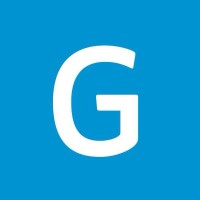
Geisinger
Geisinger is among the nation’s leading providers of value-based care, serving 1.2 million people in urban and rural communities across Pennsylvania. Founded in 1915 by philanthropist Abigail Geisinger, the nonprofit system generates $10 billion in annual revenues across 126 care sites — including 1
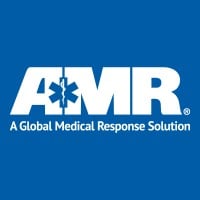
American Medical Response
American Medical Response, America’s leading provider of medical transportation, has a single mission: making a difference by caring for people in need. AMR solutions include 911 emergency, interfacility transportation, event medical, advanced & basic life support transports and federal disaster res

Memorial Sloan Kettering Cancer Center
The people of Memorial Sloan Kettering Cancer Center (MSK) are united by a singular mission: ending cancer for life. Our specialized care teams provide personalized, compassionate, expert care to patients of all ages. Informed by basic research done at our Sloan Kettering Institute, scientists acros
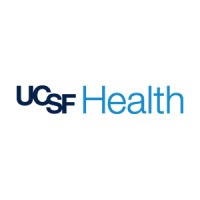
UCSF Health
UCSF Health is an integrated health care network encompassing several entities, including UCSF Medical Center, one of the nation’s top 10 hospitals according to U.S. News & World Report, and UCSF Benioff Children’s Hospitals, with campuses in Oakland and San Francisco. We are recognized throughout t
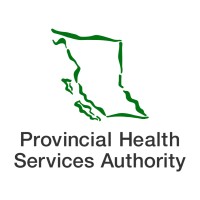
Provincial Health Services Authority
Canada's first provincial health services authority. Provincial Health Services Authority (PHSA) is one of six health authorities – the other five health authorities serve geographic regions of BC. PHSA's primary role is to ensure that BC residents have access to a coordinated network of high-quali
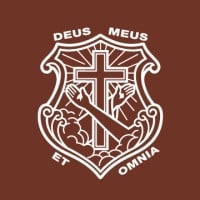
OSF HealthCare
OSF HealthCare is an integrated health system founded by The Sisters of the Third Order of St. Francis. Headquartered in Peoria, Illinois, OSF HealthCare has 16 hospitals – 10 acute care, five critical access, one transitional care – with 2,134 licensed beds throughout Illinois and Michigan. OSF em

Frequently Asked Questions (FAQ) on Cybersecurity Incidents
RSFH CyberSecurity History Information
Total Incidents: According to Rankiteo, RSFH has faced 1 incidents in the past.
Incident Types: The types of cybersecurity incidents that have occurred include ['Data Leak'].
Total Financial Loss: The total financial loss from these incidents is estimated to be {total_financial_loss}.
Cybersecurity Posture: The company's overall cybersecurity posture is described as Roper St. Francis Healthcare is a not-for-profit health system in the Lowcountry. The 657-bed system comprises more than 115 facilities and services in three counties. Member hospitals include Roper Hospital, Bon Secours St. Francis Hospital, Roper St. Francis Mount Pleasant Hospital and Roper St. Francis Berkeley Hospital. Our active medical staff is made up of more than 900 board certified doctors. The group includes Roper St. Francis Physician Partners, an expansive network of more than 200 physicians who offer primary care and 20 subspecialties. Roper St. Francis Healthcare is routinely recognized for excellence in patient care by national organizations and agencies such as BlueCross BlueShield, the Commission on Cancer, National Accreditation Program for Breast Centers, Thomson Reuters, U.S. News & World Report, Consumer Reports and more. With more than 6,000 employees, Roper St. Francis Healthcare is Charleston’s largest private employer, and the system consistently scores in the superior category for patient and physician satisfaction..
Detection and Response: The company detects and responds to cybersecurity incidents through {description_of_detection_and_response_process}.
Incident Details
Incident 1: Ransomware Attack
Title: {Incident_Title}
Description: {Brief_description_of_the_incident}
Date Detected: {Detection_Date}
Date Publicly Disclosed: {Disclosure_Date}
Date Resolved: {Resolution_Date}
Type: {Type_of_Attack}
Attack Vector: {Attack_Vector}
Vulnerability Exploited: {Vulnerability}
Threat Actor: {Threat_Actor}
Motivation: {Motivation}
Incident 2: Data Breach
Title: {Incident_Title}
Description: {Brief_description_of_the_incident}
Date Detected: {Detection_Date}
Date Publicly Disclosed: {Disclosure_Date}
Date Resolved: {Resolution_Date}
Type: {Type_of_Attack}
Attack Vector: {Attack_Vector}
Vulnerability Exploited: {Vulnerability}
Threat Actor: {Threat_Actor}
Motivation: {Motivation}
Common Attack Types: As of now, the company has not encountered any reported incidents involving common cyberattacks.
Identification of Attack Vectors: The company identifies the attack vectors used in incidents through {description_of_identification_process}.
Impact of the Incidents
Incident 1: Ransomware Attack
Financial Loss: {Financial_Loss}
Data Compromised: {Data_Compromised}
Systems Affected: {Systems_Affected}
Downtime: {Downtime}
Operational Impact: {Operational_Impact}
Conversion Rate Impact: {Conversion_Rate_Impact}
Revenue Loss: {Revenue_Loss}
Customer Complaints: {Customer_Complaints}
Brand Reputation Impact: {Brand_Reputation_Impact}
Legal Liabilities: {Legal_Liabilities}
Identity Theft Risk: {Identity_Theft_Risk}
Payment Information Risk: {Payment_Information_Risk}
Incident 2: Data Breach
Financial Loss: {Financial_Loss}
Data Compromised: {Data_Compromised}
Systems Affected: {Systems_Affected}
Downtime: {Downtime}
Operational Impact: {Operational_Impact}
Conversion Rate Impact: {Conversion_Rate_Impact}
Revenue Loss: {Revenue_Loss}
Customer Complaints: {Customer_Complaints}
Brand Reputation Impact: {Brand_Reputation_Impact}
Legal Liabilities: {Legal_Liabilities}
Identity Theft Risk: {Identity_Theft_Risk}
Payment Information Risk: {Payment_Information_Risk}
Average Financial Loss: The average financial loss per incident is {average_financial_loss}.
Commonly Compromised Data Types: The types of data most commonly compromised in incidents are {list_of_commonly_compromised_data_types}.
Incident 1: Ransomware Attack
Entity Name: {Entity_Name}
Entity Type: {Entity_Type}
Industry: {Industry}
Location: {Location}
Size: {Size}
Customers Affected: {Customers_Affected}
Incident 2: Data Breach
Entity Name: {Entity_Name}
Entity Type: {Entity_Type}
Industry: {Industry}
Location: {Location}
Size: {Size}
Customers Affected: {Customers_Affected}
Response to the Incidents
Incident 1: Ransomware Attack
Incident Response Plan Activated: {Yes/No}
Third Party Assistance: {Yes/No}
Law Enforcement Notified: {Yes/No}
Containment Measures: {Containment_Measures}
Remediation Measures: {Remediation_Measures}
Recovery Measures: {Recovery_Measures}
Communication Strategy: {Communication_Strategy}
Adaptive Behavioral WAF: {Adaptive_Behavioral_WAF}
On-Demand Scrubbing Services: {On_Demand_Scrubbing_Services}
Network Segmentation: {Network_Segmentation}
Enhanced Monitoring: {Enhanced_Monitoring}
Incident 2: Data Breach
Incident Response Plan Activated: {Yes/No}
Third Party Assistance: {Yes/No}
Law Enforcement Notified: {Yes/No}
Containment Measures: {Containment_Measures}
Remediation Measures: {Remediation_Measures}
Recovery Measures: {Recovery_Measures}
Communication Strategy: {Communication_Strategy}
Adaptive Behavioral WAF: {Adaptive_Behavioral_WAF}
On-Demand Scrubbing Services: {On_Demand_Scrubbing_Services}
Network Segmentation: {Network_Segmentation}
Enhanced Monitoring: {Enhanced_Monitoring}
Incident Response Plan: The company's incident response plan is described as {description_of_incident_response_plan}.
Third-Party Assistance: The company involves third-party assistance in incident response through {description_of_third_party_involvement}.
Data Breach Information
Incident 2: Data Breach
Type of Data Compromised: {Type_of_Data}
Number of Records Exposed: {Number_of_Records}
Sensitivity of Data: {Sensitivity_of_Data}
Data Exfiltration: {Yes/No}
Data Encryption: {Yes/No}
File Types Exposed: {File_Types}
Personally Identifiable Information: {Yes/No}
Prevention of Data Exfiltration: The company takes the following measures to prevent data exfiltration: {description_of_prevention_measures}.
Handling of PII Incidents: The company handles incidents involving personally identifiable information (PII) through {description_of_handling_process}.
Ransomware Information
Incident 1: Ransomware Attack
Ransom Demanded: {Ransom_Amount}
Ransom Paid: {Ransom_Paid}
Ransomware Strain: {Ransomware_Strain}
Data Encryption: {Yes/No}
Data Exfiltration: {Yes/No}
Ransom Payment Policy: The company's policy on paying ransoms in ransomware incidents is described as {description_of_ransom_payment_policy}.
Data Recovery from Ransomware: The company recovers data encrypted by ransomware through {description_of_data_recovery_process}.
Regulatory Compliance
Incident 1: Ransomware Attack
Regulations Violated: {Regulations_Violated}
Fines Imposed: {Fines_Imposed}
Legal Actions: {Legal_Actions}
Regulatory Notifications: {Regulatory_Notifications}
Incident 2: Data Breach
Regulations Violated: {Regulations_Violated}
Fines Imposed: {Fines_Imposed}
Legal Actions: {Legal_Actions}
Regulatory Notifications: {Regulatory_Notifications}
Regulatory Frameworks: The company complies with the following regulatory frameworks regarding cybersecurity: {list_of_regulatory_frameworks}.
Ensuring Regulatory Compliance: The company ensures compliance with regulatory requirements through {description_of_compliance_measures}.
Lessons Learned and Recommendations
Incident 1: Ransomware Attack
Lessons Learned: {Lessons_Learned}
Incident 2: Data Breach
Lessons Learned: {Lessons_Learned}
Incident 1: Ransomware Attack
Recommendations: {Recommendations}
Incident 2: Data Breach
Recommendations: {Recommendations}
Key Lessons Learned: The key lessons learned from past incidents are {list_of_key_lessons_learned}.
Implemented Recommendations: The company has implemented the following recommendations to improve cybersecurity: {list_of_implemented_recommendations}.
References
Additional Resources: Stakeholders can find additional resources on cybersecurity best practices at {list_of_additional_resources}.
Investigation Status
Incident 1: Ransomware Attack
Investigation Status: {Investigation_Status}
Incident 2: Data Breach
Investigation Status: {Investigation_Status}
Communication of Investigation Status: The company communicates the status of incident investigations to stakeholders through {description_of_communication_process}.
Stakeholder and Customer Advisories
Incident 1: Ransomware Attack
Stakeholder Advisories: {Stakeholder_Advisories}
Customer Advisories: {Customer_Advisories}
Incident 2: Data Breach
Stakeholder Advisories: {Stakeholder_Advisories}
Customer Advisories: {Customer_Advisories}
Advisories Provided: The company provides the following advisories to stakeholders and customers following an incident: {description_of_advisories_provided}.
Initial Access Broker
Incident 1: Ransomware Attack
Entry Point: {Entry_Point}
Reconnaissance Period: {Reconnaissance_Period}
Backdoors Established: {Backdoors_Established}
High Value Targets: {High_Value_Targets}
Data Sold on Dark Web: {Yes/No}
Incident 2: Data Breach
Entry Point: {Entry_Point}
Reconnaissance Period: {Reconnaissance_Period}
Backdoors Established: {Backdoors_Established}
High Value Targets: {High_Value_Targets}
Data Sold on Dark Web: {Yes/No}
Monitoring and Mitigation of Initial Access Brokers: The company monitors and mitigates the activities of initial access brokers through {description_of_monitoring_and_mitigation_measures}.
Post-Incident Analysis
Incident 1: Ransomware Attack
Root Causes: {Root_Causes}
Corrective Actions: {Corrective_Actions}
Incident 2: Data Breach
Root Causes: {Root_Causes}
Corrective Actions: {Corrective_Actions}
Post-Incident Analysis Process: The company's process for conducting post-incident analysis is described as {description_of_post_incident_analysis_process}.
Corrective Actions Taken: The company has taken the following corrective actions based on post-incident analysis: {list_of_corrective_actions_taken}.
Additional Questions
General Information
Ransom Payment History: The company has {paid/not_paid} ransoms in the past.
Last Ransom Demanded: The amount of the last ransom demanded was {last_ransom_amount}.
Last Attacking Group: The attacking group in the last incident was {last_attacking_group}.
Incident Details
Most Recent Incident Detected: The most recent incident detected was on {most_recent_incident_detected_date}.
Most Recent Incident Publicly Disclosed: The most recent incident publicly disclosed was on {most_recent_incident_publicly_disclosed_date}.
Most Recent Incident Resolved: The most recent incident resolved was on {most_recent_incident_resolved_date}.
Impact of the Incidents
Highest Financial Loss: The highest financial loss from an incident was {highest_financial_loss}.
Most Significant Data Compromised: The most significant data compromised in an incident was {most_significant_data_compromised}.
Most Significant System Affected: The most significant system affected in an incident was {most_significant_system_affected}.
Response to the Incidents
Third-Party Assistance in Most Recent Incident: The third-party assistance involved in the most recent incident was {third_party_assistance_in_most_recent_incident}.
Containment Measures in Most Recent Incident: The containment measures taken in the most recent incident were {containment_measures_in_most_recent_incident}.
Data Breach Information
Most Sensitive Data Compromised: The most sensitive data compromised in a breach was {most_sensitive_data_compromised}.
Number of Records Exposed: The number of records exposed in the most significant breach was {number_of_records_exposed}.
Ransomware Information
Highest Ransom Demanded: The highest ransom demanded in a ransomware incident was {highest_ransom_demanded}.
Highest Ransom Paid: The highest ransom paid in a ransomware incident was {highest_ransom_paid}.
Regulatory Compliance
Highest Fine Imposed: The highest fine imposed for a regulatory violation was {highest_fine_imposed}.
Most Significant Legal Action: The most significant legal action taken for a regulatory violation was {most_significant_legal_action}.
Lessons Learned and Recommendations
Most Significant Lesson Learned: The most significant lesson learned from past incidents was {most_significant_lesson_learned}.
Most Significant Recommendation Implemented: The most significant recommendation implemented to improve cybersecurity was {most_significant_recommendation_implemented}.
References
Most Recent Source: The most recent source of information about an incident is {most_recent_source}.
Most Recent URL for Additional Resources: The most recent URL for additional resources on cybersecurity best practices is {most_recent_url}.
Investigation Status
Current Status of Most Recent Investigation: The current status of the most recent investigation is {current_status_of_most_recent_investigation}.
Stakeholder and Customer Advisories
Most Recent Stakeholder Advisory: The most recent stakeholder advisory issued was {most_recent_stakeholder_advisory}.
Most Recent Customer Advisory: The most recent customer advisory issued was {most_recent_customer_advisory}.
Initial Access Broker
Most Recent Entry Point: The most recent entry point used by an initial access broker was {most_recent_entry_point}.
Most Recent Reconnaissance Period: The most recent reconnaissance period for an incident was {most_recent_reconnaissance_period}.
Post-Incident Analysis
Most Significant Root Cause: The most significant root cause identified in post-incident analysis was {most_significant_root_cause}.
Most Significant Corrective Action: The most significant corrective action taken based on post-incident analysis was {most_significant_corrective_action}.
What Do We Measure?
















Every week, Rankiteo analyzes billions of signals to give organizations a sharper, faster view of emerging risks. With deeper, more actionable intelligence at their fingertips, security teams can outpace threat actors, respond instantly to Zero-Day attacks, and dramatically shrink their risk exposure window.
These are some of the factors we use to calculate the overall score:
Identify exposed access points, detect misconfigured SSL certificates, and uncover vulnerabilities across the network infrastructure.
Gain visibility into the software components used within an organization to detect vulnerabilities, manage risk, and ensure supply chain security.
Monitor and manage all IT assets and their configurations to ensure accurate, real-time visibility across the company's technology environment.
Leverage real-time insights on active threats, malware campaigns, and emerging vulnerabilities to proactively defend against evolving cyberattacks.




